Using essential oils for back pain relief is an increasingly popular and effective approach to managing discomfort. With a wide variety of essential oils available, each with unique properties, it’s crucial to understand which ones are most suitable for addressing different types of back pain.
In this guide, we will explore the potential of essential oils to relieve back pain and discuss specific remedies such as ginger and peppermint essential oil.
We will discuss specific essential oils, such as ginger and peppermint, that have been proven to help manage pain effectively.
Additionally, you’ll learn how to create your own DIY pain blend recipe using these potent natural remedies in combination with carrier oils like coconut oil.
Apart from using essential oils for back pain management techniques, we will also cover the importance of incorporating stretching exercises targeting both lower and upper-back regions into your daily routine.
Furthermore, nutritional support plays a vital role in maintaining overall back health; therefore, we will examine foods rich in calcium and magnesium and anti-inflammatory options ideal for combating soreness.
Last but not least, headaches often accompany chronic back issues; hence our exploration includes preparing an effective headache relief roller blend using essential oils tailored specifically for this purpose.
Essential Oils for Back Pain Relief
If you’re struggling with back pain, essential oils can provide a natural and effective remedy. These potent plant extracts have been used for centuries to alleviate various ailments, including muscle soreness and inflammation.
There are four main categories of essential oils for back pain including:
Cooling Essential Oils
These cooling essential oils contain menthol, which is known to help alleviate muscle pain, spasms, and swelling.
Warming Essential Oils
Warming essential oils are great for moving stagnancy in the muscles and alleviating pain worsened by cold.
Anti-inflammatory Essential Oils
These oils reduce inflammation and reduce pain.
Analgesic Essential Oils
Analgesic essential oils are oils that alleviate pain.
9 of The Best Essential Oils for Back Pain
Below is a list of my top 9 essential oils for back pain, sciatica, muscle spasms in the neck and back, inflammation, and more!
1. Ginger Essential Oil for Pain Management
Ginger essential oil is derived from the root of the ginger plant (Zingiber officinale) and has become increasingly popular in recent years due to its anti-inflammatory and analgesic properties.
It works by inhibiting the production of inflammatory compounds in your body and increasing blood circulation around affected areas. It’s my favorite essential oil for back pain!
To use ginger essential oil for back pain relief, mix a few drops with a carrier oil like coconut or almond oil before massaging it into your skin over the painful area.
You can also add several drops of ginger essential oil to a warm bath or use an aromatherapy diffuser to inhale its soothing scent throughout your home.
2. Peppermint Essential Oil to Ease Muscle Spasms
Peppermint essential oil, extracted from Mentha piperita leaves, is another powerful option when it comes to easing back pain.
Its cooling effect helps reduce muscle spasms, while its analgesic properties help relieve discomfort caused by inflammation. It is one of the best essential oils for lower back pain.
To apply peppermint essential oil topically, dilute it with a carrier oil and gently massage it into the affected area. Be sure to avoid contact with your eyes or any open wounds.
You can also try putting a few drops of peppermint essential oil into an aromatherapy diffuser or blending it with Epsom salts for a comforting bath.
3. Wintergreen Oil to Eliminate Heat and Swelling
Another popular essential oil used for treating back pain is wintergreen essential oil. Wintergreen carries similar analgesic properties as peppermint due to its high concentration of methyl salicylate—a compound similar to aspirin—which helps reduce inflammation in the body.
However, it’s important to note that taking blood thinners or other medications might increase your risk of bleeding when using this type of essential oil, so always consult a doctor first before use.
4. Lemongrass Oil for Reducing Pain
Lemongrass has been widely studied for its antifungal properties, but research has also found it effective in reducing inflammation which could lead to reduced pain levels.
One study on mice found that lemongrass essential oil had notable anti-inflammatory effects that could benefit those suffering from chronic back pain conditions like sciatica or arthritis-related issues.
5. Lavender Oil for Reducing Inflammation
Lavender essential oil is one of the most popular essential oils for back pain, and with good reason.
This sweet-smelling oil has been used for centuries to soothe sore muscles and reduce inflammation. It’s also a natural analgesic, which means it can help relieve pain from arthritis or other chronic conditions.
Try adding a few drops of lavender oil to your bath salts or add it to massage oil and massage it into your skin after a hot shower for maximum relief.
6. Rosemary Oil to Ease Nerve Pain
Rosemary is known as the “herb of remembrance,” but its therapeutic properties go beyond just memory enhancement; rosemary essential oil can be very helpful in treating muscle spasms associated with back pain.
Rosemary essential oil has anti-inflammatory effects that can help reduce swelling around painful joints while promoting circulation at the same time – perfect if you suffer from sciatica or other nerve-related issues.
Mix a few drops with warm water in an atomizer bottle and spray onto affected areas twice daily until symptoms subside significantly.
7. Eucalyptus Oil to Ease Back Soreness
Many cultures have used eucalyptus over thousands of years due to its potent healing properties and analgesic benefits; speci,ically when it comes to relieving muscular tension caused by poor posture or overexertion during exercise routines – both common causes of lower backache.
Eucalyptus essential oil will reduce inflammation and pain associated with lower back soreness, sciatica, swelling, and spasms.
Alternatively, try massaging diluted eucalyptus directly onto painful areas using circular motions – this should provide immediate relief from any aches & pains within minutes.
8. Roman Chamomile Oil for Neck and Back Muscle Tension
Roman chamomile essential oil is one of nature’s oldest remedies for calming nerves & easing stress levels – making it ideal for those suffering from tension headaches caused by neck & shoulder strain associated with bad posture habits such as sitting hunched up at desks all day long.
To get the full benefits try mixing 5-10 drops of Roman chamomile essential oil into 1 oz of olive, coconut, or almond oil, then apply liberally over the entire affected area before bedtime – this should have you sleeping soundly without interruption throughout the night with reduced back pain.
9. Sweet Marjoram Oil for Spasms
Marjoram essential oil is another powerful essential oil used to treat back pain due to its antispasmodic, anti-inflammatory, and analgesic properties. It helps relax tense muscles while reducing inflammation caused by injury or illness.
To treat your back pain, add a few drops of marjoram into a carrier oil before massaging it onto the affected area twice daily.
Incorporating these essential oils into your daily routine can help provide natural relief from back pain and muscle soreness.
However, always consult with a healthcare professional before using essential oils if you’re pregnant, nursing, or have any pre-existing medical conditions.
Essential oils are a great natural way to provide relief from back pain. With the right blend of essential oils, you can create your own DIY Pain Blend Recipe that is tailored specifically for your needs.
Essential Oils for Back Pain Recipe
Creating your own custom blend of essential oils is an excellent way to naturally and effectively relieve back pain.
By combining the therapeutic properties of multiple oils, you can create a potent solution tailored specifically for alleviating discomfort and soreness in your back. To create a potent blend of essential oils for pain relief, this section will provide you with a simple step-by-step recipe.
Ingredients Needed for a Potent Pain Relief Blend
- Ginger Essential Oil: Known for its warming effect on muscles and joints, ginger oil helps reduce inflammation and improve circulation. It’s especially beneficial when dealing with chronic or acute back pain.
- Peppermint Essential Oil: Peppermint oil has cooling properties that can help soothe muscle spasms while providing analgesic effects to alleviate discomfort caused by tension or strain.
- Lavender Essential Oil: With its calming aroma and anti-inflammatory benefits, lavender oil works wonders in promoting relaxation while reducing swelling around affected areas.
- Eucalyptus Essential Oil: Eucalyptus offers powerful anti-inflammatory properties along with a refreshing scent that invigorates the senses as it eases muscle stiffness and joint pain associated with back issues.
- Carrier Oil (such as Coconut or Jojoba): A carrier oil is necessary to dilute the essential oils before applying them directly onto your skin. This ensures safe usage without causing irritation or sensitivity reactions.
Mixing Ratios and Application Methods
Follow these simple steps to create your own DIY pain relief blend:
In a 1 oz roll-on bottle, combine the following essential oils:
- 10 drops of Ginger Essential Oil
- 8 drops of Peppermint Essential Oil
- 6 drops of Lavender Essential Oil
- 4 drops of Eucalyptus Essential Oil
- 4 drops Black Pepper Essential Oil
- Fill to the shoulder with carrier oil
Dilution ratios may vary depending on individual sensitivity and desired strength.
To use your custom pain relief blend, simply massage a few drops onto the affected area as needed.
You can also add a few drops of the pure essential oil blend without a carrier oil to an aromatherapy diffuser or warm bath for added relaxation benefits.
Remember to always perform a patch test before applying any new essential oil blends directly onto your skin.
Note: If expecting, breastfeeding, or having any medical issue that could be affected by essential oils use, it is important to talk with a healthcare provider prior to incorporating them into your regimen.
This DIY Pain Blend Recipe is a great way to make your own blend of essential oils that can help reduce lower back pain.
How to Use Essential Oils for Back Pain
There are several ways to use essential oils for back pain.
Diluting Essential Oils for Topical Use
To use essential oils topically on your back, you must first dilute them with a carrier oil. Start by mixing up to 6 drops of the selected oil with 6 teaspoons of jojoba or olive oil 9or any carrier oil of choice).
Do a patch test on a small area of skin and wait 24 hours for any potential irritation before applying it more liberally to your back.
Massage the diluted mixture in lightly for better absorption, but be sure to wash your hands afterward and avoid contact with your eyes or mouth.
Inhaling Essential Oils
Aromatherapy is another way to use essential oils for pain relief. Add several drops of pure essential oils into the water in a diffuser and leave it running in your home or office throughout the day as needed.
Inhaling these aromatic molecules can help reduce inflammation associated with back pain while providing calming effects that aid relaxation and stress relief.
Using Essential Oils in Baths
For an extra soothing experience, try adding 10 drops of diluted essential oils to warm bathwater before getting in.
The heat helps open pores so the therapeutic properties are absorbed quickly while offering some much-needed comfort from muscle aches and pains at the same time.
Just make sure you’re careful when entering or exiting the tub since these natural ingredients may make surfaces slippery.
Incorporating Stretching Exercises
Alleviate back pain by incorporating daily stretching exercises designed to target key muscles in your back. Explore various stretches that can be done at home or work without any special equipment, helping you maintain flexibility while reducing discomfort.
Simple Stretches to Relieve Lower Back Tension
If you’re experiencing lower back pain, try these simple yet effective stretches:
- Knee-to-chest stretch: Lie on your back with both legs extended. Slowly bring one knee to your chest and hold it with both hands for 15-30 seconds. Repeat on the other side.
- Pelvic tilt: Lie on your back with knees bent and feet flat on the floor. Tighten your core and press the lumbar region into the floor, sustaining for a few moments before relaxing.
- Cat-cow stretch: Start in a tabletop position (on all fours) with wrists under shoulders and knees under hips. Inhale as you arch your spine downward (cow pose), then exhale as you round it upward (cat pose). Repeat several times for best results.
Upper-back Stretches Suitable for Office Workers
Sitting at a desk all day can lead to upper-back tension and discomfort. Incorporate these easy stretches into your routine to alleviate tightness around the neck area commonly associated with headaches due to poor posture or stress-related issues affecting both head & upper body regions alike.
- Neck stretch: Sit up straight and slowly tilt your head to one side, bringing your ear towards your shoulder. Hold for 15-30 seconds before repeating on the other side.
- Shoulder rolls: While sitting or standing, roll both shoulders forward in a circular motion, then reverse direction and roll them backward. Repeat several times throughout the day.
- Upper trapezius stretch: Sit up straight with feet flat on the floor. Take a grip of the seat’s underside with one hand, then delicately lean your head away from that direction until you sense a comfortable stretch in the neck and upper back area. Hold for 15-30 seconds before switching sides.
Incorporating these stretches into your daily routine can help alleviate back pain caused by muscle tension and poor posture habits often developed during long hours at work or home office setups.
Remember to take breaks regularly throughout the day to stand up, walk around, and perform these simple exercises as needed.
Incorporating stretches into your daily regimen can be an effective way to combat back pain and maintain overall well-being.
Additionally, nutritional support is another key component for managing back health; foods high in calcium and magnesium, as well as anti-inflammatory options, can help reduce soreness.
Massage Techniques Targeting Problem Areas
Incorporating massage techniques into your essential oil application routine can help target specific problem areas and provide deeper relief from back pain. Start by warming a few drops of your pain relief blend between your hands before gently massaging it onto the affected area using circular motions. This technique promotes better circulation to the muscles, allowing for deeper absorption of essential oils into the skin.
- Kneading: Use your fingers and thumbs to apply pressure in a kneading motion on tight muscles or knots.
- Petrissage: Gently lift and squeeze muscle tissue between your thumb and fingers for increased circulation.
- Effleurage: Glide both hands along either side of the spine using long strokes towards the heart to encourage lymphatic drainage.
Using Compresses Effectively
An alternative method for applying essential oils is through warm or cold compresses. Depending on whether you’re experiencing inflammation (cold) or muscle tension (warm), choose an appropriate temperature for maximum effectiveness.
To create a compress, add several drops of your pain relief blend directly onto a damp cloth then fold it over once before placing it on top of plastic wrap large enough to cover both sides completely.
Apply the compress to your back, securing it in place with a towel or elastic bandage if necessary. Leave on for 15-20 minutes and repeat as needed.
Roller Bottle Applications
For an easy-to-use, mess-free application method, consider creating a roller bottle filled with your essential oil blend. A roller bottle is a convenient way to apply essential oil blends, and can be taken with you wherever you go.
To create one:
- Purchase a glass roller bottle (preferably dark-colored to protect oils from sunlight).
- Add desired amount of pain relief blend to the bottle using a dropper or pipette.
- Fill remaining space with carrier oil (such as fractionated coconut oil) up until just below the neck of the bottle.
- Carefully insert rollerball top into place and secure cap tightly before shaking well to mix contents thoroughly.
To use, simply roll onto affected areas whenever you feel discomfort or stiffness arising. Be sure to test for skin sensitivity by applying a small amount first before rolling over larger areas of skin.
By using the correct application methods for essential oil blends, you can target problem areas and provide relief to those suffering from back pain.
Additionally, supporting your spine health naturally with stretching routines and nutrient-rich foods is an effective way to improve joint health.
Nutritional Support for Back Health
It’s essential to maintain a balanced diet that promotes overall spinal health. Consuming nourishment wealthy in vitamins and minerals can help bolster solid bones, sound ligament, and diminished aggravation. In this section, we’ll discuss specific nutrients beneficial in managing chronic or acute back issues through dietary choices.
Foods High in Calcium and Magnesium
Calcium is crucial for maintaining bone strength, while magnesium helps with muscle relaxation and nerve function. Both of these minerals play an essential role in supporting your back health. Incorporate the following calcium- and magnesium-rich foods into your daily meals:
- Dairy products like milk, yogurt, and cheese (source)
- Leafy green vegetables such as spinach, kale, collard greens (source)
- Nuts (almonds) & seeds (chia seeds)
- Fish like salmon & sardines (source)
- Tofu & tempeh (source) li>
Anti-inflammatory Foods Ideal for Combating Soreness
Inflammation can exacerbate back pain by causing swelling around the affected area. Consuming anti-inflammatory foods can help reduce inflammation and provide relief from soreness. Here are some examples of such foods:
- Omega-3 rich fish like salmon, mackerel, and sardines (source)
- Berries (blueberries, strawberries, & cherries)
- Green tea (source)
- Turmeric and ginger ( source )
- Olive oil Source
Nutritional care is necessary for keeping a healthy way of life and avoiding the likelihood of enduring chronic pain.
Creating an effective headache relief roller blend with essential oils can provide further relief from tension headaches caused by muscle soreness in the neck and shoulders.
Headache Relief Roller Blend with Essential Oils
This natural remedy is perfect for combating discomfort due to poor posture or stress-related issues affecting both head and upper body regions alike.
Preparing an Effective Headache Relief Roller Blend
To create your own headache relief roller blend, follow these simple steps:
- Select your essential oils: Choose from potent essential oils known for their pain-relieving properties such as peppermint oil, lavender oil, and eucalyptus oil. These oils, which have anti-inflammatory and nerve pain reducing properties as well as skin calming effects, can be used to create a headache relief blend.
- Pick a carrier oil: Dilute your chosen essential oils in a carrier oil like coconut oil or almond oil. Carrier oils are necessary because they help dilute the concentrated essential oils while also providing additional benefits like moisturizing the skin.
- Determine the right ratio: For adults, mix approximately 10-12 drops of each selected essential oil per ounce of carrier oil. If creating this blend for children or those with sensitive skin, use fewer drops of each essential oil (around five drops per ounce).
- Add to a roller bottle: Transfer your mixture into a small glass roller bottle that allows for easy application on affected areas whenever needed.
To use your homemade headache relief roller blend effectively,
- Gently shake the bottle before each use to ensure the oils are well mixed.
- Apply the blend directly to your temples, forehead, and back of your neck. You can also apply it on any other areas where you’re experiencing tension or pain.
- Massage the oil into your skin using small circular motions for better absorption and increased effectiveness.
In addition to creating a headache relief roller blend with essential oils, consider incorporating other natural remedies like back stretches, maintaining proper posture, and eating a balanced diet rich in anti-inflammatory foods to further support overall spinal health and reduce discomfort caused by tense muscles around the neck area.
Essential Oils Known for Headache Relief
Back pain can also cause headaches, so if you’re on of those people, then this next section is for you!
There are several essential oils that have been shown to help reduce headache symptoms.
Some of the most popular essential oils for headaches include:
- Lavender oil: This calming oil is known for its ability to relieve tension and promote relaxation, making it an excellent choice for addressing stress-induced headaches. Learn more about lavender’s benefits from this Healthline article.
- Eucalyptus oil: With its refreshing scent and anti-inflammatory properties, eucalyptus oil can help clear sinuses and reduce sinus pressure that may contribute to headaches.
- Rosemary oil: Known for stimulating circulation and reducing inflammation, rosemary essential oil is another great option when dealing with headache discomforts. Discover additional information on rosemary’s effectiveness at this Dr.Axe page.
Creating Your Own Headache Roller Blend Recipe
To create your own headache relief roller blend, follow these simple steps:
- Select a carrier oil, such as fractionated coconut oil or sweet almond oil. These oils will help dilute the essential oils and make them safe for topical application.
- Choose one or more of the essential oils mentioned above based on your personal preferences and needs.
- In a small glass container, mix together equal parts of each chosen essential oil with your carrier oil. For instance, combine five drops of lavender oil and eucalyptus oil each with a measure of two tablespoons of carrier oil.
- Pour the mixture into a roller bottle for easy application.
To use your headache relief roller blend recipe effectively, apply it to pulse points like temples, wrists or behind ears when experiencing headache symptoms.
The combination of soothing scents and targeted application can provide quick relief from tension headaches while also supporting overall relaxation throughout the day.
Frequently Asked Questions Essential Oils Back Pain
What essential oil is good for back pain?
The best essential oil for back pain is either ginger essential oil or peppermint essential oil based on the type of back pain you have.
Ginger is warming and helps relieve pain in the muscles, joints, and nerves.
Peppermint is cooling because of its menthol content and acts as an effective pain reliever for sciatica and muscle spasms. It is especially good for chronic pain.
What essential oils are good for back pain?
Some effective essential oils for back pain relief include ginger, peppermint, lavender, eucalyptus, and frankincense. These oils possess anti-inflammatory and analgesic properties that can help alleviate muscle tension and reduce inflammation. Combining them in a pain relief blend may provide synergistic benefits.
Does aromatherapy work for back pain?
Aromatherapy can be an effective complementary treatment for managing back pain. Inhaling the aroma of certain essential oils or applying them topically with a carrier oil can help relax muscles, reduce inflammation, and promote overall well-being. However, combining aromatherapy with other therapies like stretching exercises or physical therapy is important for optimal results.
Will frankincense oil help back pain?
Frankincense oil has been found to have anti-inflammatory properties which may aid in reducing inflammation associated with back pain. It also helps promote relaxation when used in aromatherapy or massage applications.
While it might not eliminate the root cause of your discomfort entirely on its own, studies suggest that using frankincense as part of a holistic approach could potentially offer some relief from symptoms.
Do essential oils really help pain?
Essential oils contain various bioactive compounds that exhibit analgesic (pain-relieving) and anti-inflammatory effects on the body when used correctly.
Research indicates that essential oils can help alleviate pain and discomfort from various conditions, including muscle aches, headaches, and joint pain. However, they should be used as complementary treatments alongside conventional therapies for best results.
Key Takeaway
Utilizing essential oils for back pain relief is an effective way to alleviate symptoms and promote general well-being. While there are many DIY recipes available, it’s important to remember that the best results come from combining them with stretching exercises, nutritional support and headache relief roller blends. Ultimately, using essential oils can help you find lasting relief from your back pain so you can live an active life without worry or discomfort.
You may also enjoy reading:
Essential Oil Quick Usage Guide – Aches and Pains
Essential Oils for Pain Relief
Effective Essential Oils for Headaches
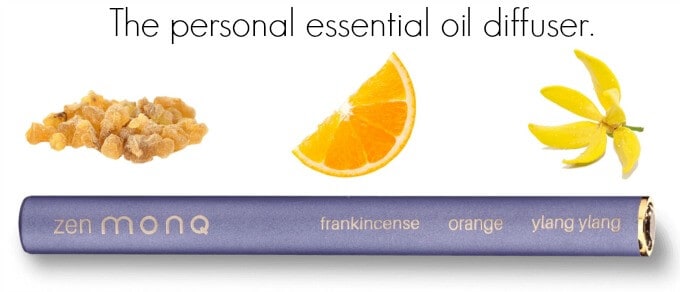 This post contains affiliate links. We are a participant in the Amazon Services LLC Associates Program, an affiliate advertising program designed to provide a means for us to earn fees by linking to Amazon.com and affiliated sites. Please read my full disclosure and disclaimer.
This post contains affiliate links. We are a participant in the Amazon Services LLC Associates Program, an affiliate advertising program designed to provide a means for us to earn fees by linking to Amazon.com and affiliated sites. Please read my full disclosure and disclaimer. 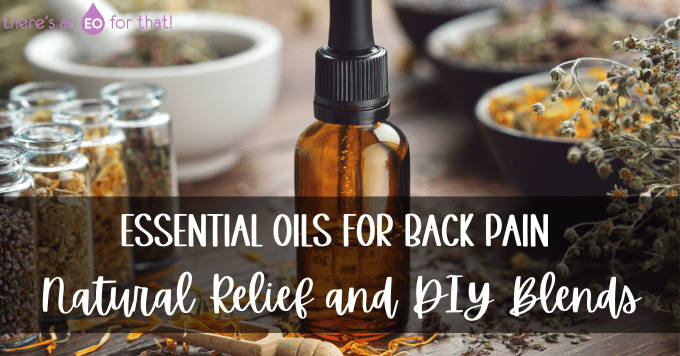
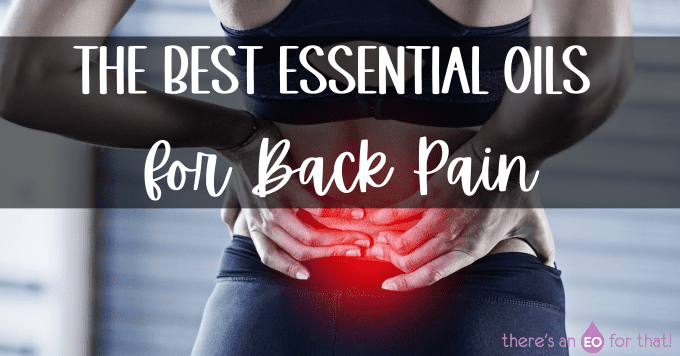
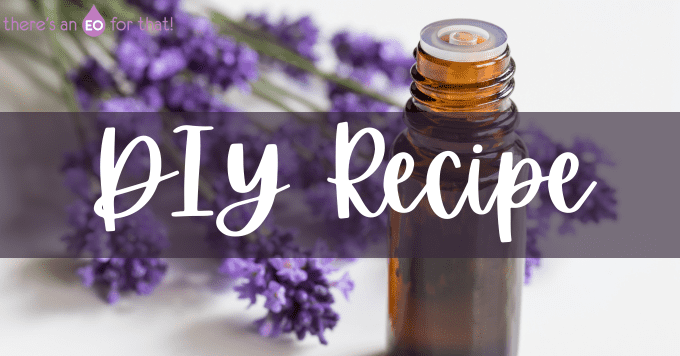


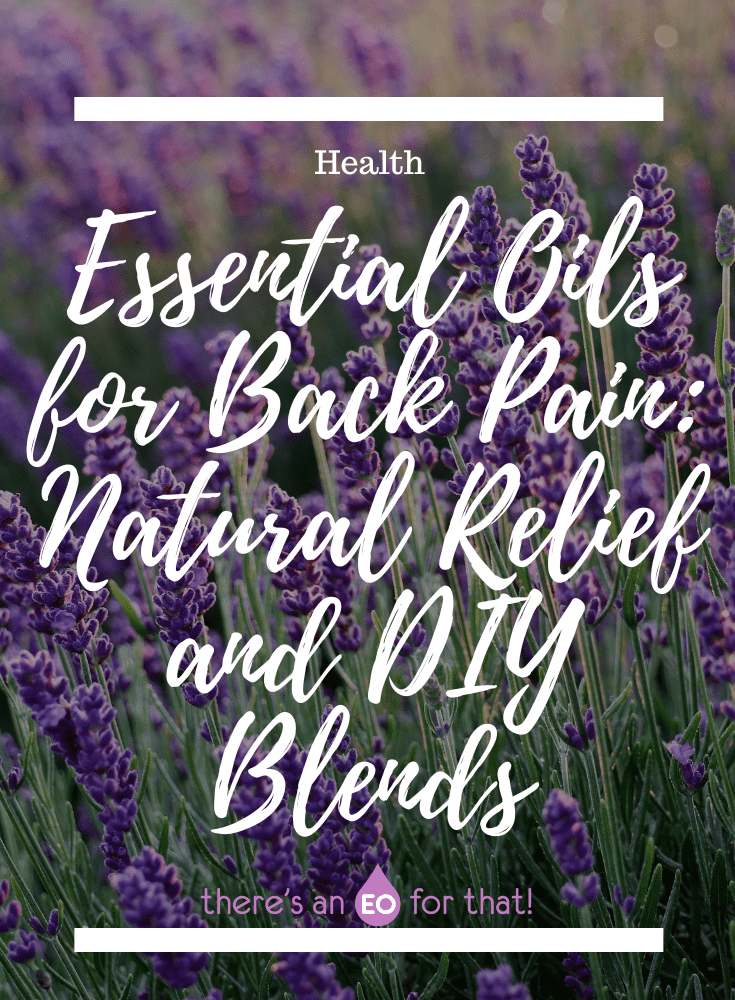

Leave a Reply